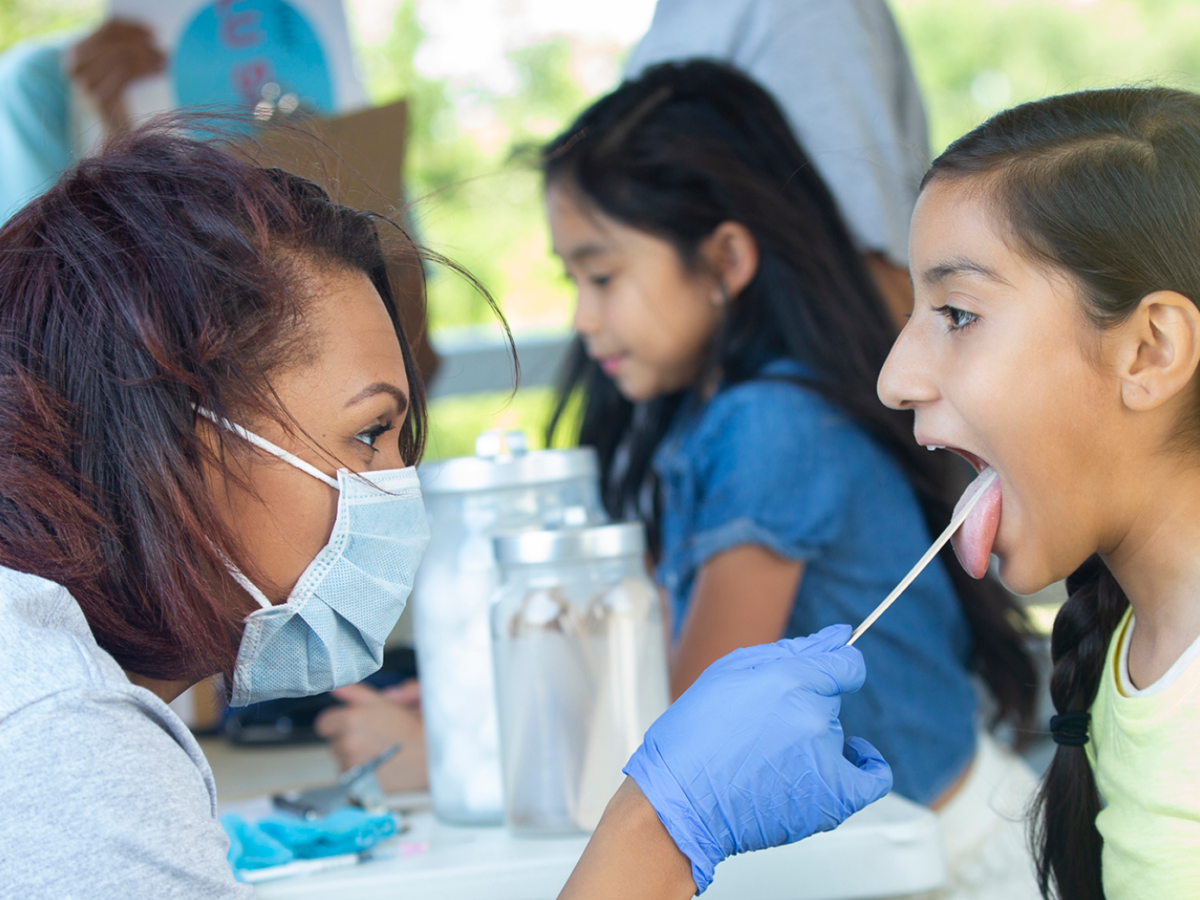
For the past decade, the two of us working in different cities for different organizations have found ourselves coming together to support vulnerable students. Whether its pushing for better access to health services at school, advocating for better attention to student absenteeism, or deciphering federal policy initiatives, our work has often aligned. So, when schools and districts began receiving billions in federal aid to address the impact of COVID-19, we saw an opportunity to analyze the allowable uses for this money and offer some ideas for using it in sustainable ways. We recognize that schools won’t be able to address academic disparities exacerbated by the pandemic until they deal with the health disparities.
That is why we partnered with Kaiser Permanente and The School Superintendents Association (AASA) to develop the Addressing Student and Staff Health with COVID-19 Relief Funding guidance on how school districts can use the influx of federal aid for public schools, totaling nearly $190 billion, to navigate two key health priorities.
The first is ensuring that buildings are safe and healthy environments for students to learn and educators to teach. This is particularly important with COVID-19 cases rising among younger children and many families worried about sending their unvaccinated children back to in-person classrooms. Teachers are concerned, as well. To keep them safe, the Centers for Disease Control and Prevention recommends that schools and districts should continue to provide the protective equipment, physical space, and contact-tracing needed to contain the spread of COVID-19.
The second priority is addressing the broader health needs of children and youth, particularly mental health concerns, so that all students can recover from both the academic and social-emotional effects of the pandemic. Research and experience tell us that healthy students are better learners. They attend school more regularly, focus better in class, and develop strong relationships with peers and teachers.
Recognizing these health needs is particularly important for students from disadvantaged backgrounds, many of whom have experienced the worst of the pandemic. Many children and youth haven’t seen a doctor in the past year, missing regular well-child visits. An estimated one in five students have missed key vaccinations they need to prevent childhood diseases. Other children have gone hungry when parents lost jobs and wages needed to support the family. And many others have suffered trauma from losing loved ones, moving to a new home, or simply losing touch with friends and teachers. Educators have suffered as well, with some experiencing physical or mental health problems.
Fortunately, the COVID-19 relief funding offers schools districts and states wide latitude in supporting student and staff health and equity concerns. All three of the relief packages approved since March 2020 specifically mention safe and healthy school environments, mental health, and reengaging students and families as top priorities.
While this funding creates a historic opportunity, we need to support school districts in using this money to advance student and staff health in ways that will last beyond the three-year window for spending the federal aid. Our new guidance outlines a number of other strategies that schools and school districts could pursue, including:
- Expand the equipment and training needed for the use of telehealth to provide students access to mental health counseling and physical checkups through remote networks. This could be a particularly effective strategy in rural communities, which often have a shortage of providers and long drive times to get to appointments.
- Adopt a Community Schools model that brings together other agencies and local nonprofit organization to address the needs of students and families. Additionally, COVID-19 relief dollars can support hiring a school-based coordinator position.
- Conduct a schoolwide mental health assessment to gauge the trauma experienced by students and staff members and determine what services are needed.
- Offer access to immunization clinics to ensure more students are up to date on their vaccinations, as well as outreach to enroll all eligible students in Medicaid or the Children’s Health Insurance Program (CHIP).
- Develop social-emotional learning programs that improve a school’s climate and provide training to staff members on interventions, such as restoratives practices, that can resolve conflicts and behavioral issues at school without turning to suspensions.
- Create school-based health centers, which can keep students stay healthier and thwart the spread of COVID-19 and other infectious diseases.
- Invest in better tracking of student health data to identify future needs and support reimbursement for Medicaid expenses, while staying consistent with HIPAA, FERPA, and protecting individual health data privacy concerns.
- Upgrade school ventilation systems both to reduce the spread of COVID-19 and improve student health. Poor air quality can lead to greater absences among students with asthma and allergies; likewise, buildings that are too hot or too cold can make it harder for learning to happen.
Schools and local health officials need to approach this work with equity in mind, given the disproportionate harm that the COVID-19 crisis has done to disadvantaged students and their families. That means spending the infusion of federal funding in ways that not only help students recover from the pandemic’s disruption, but also begin addressing some of the systemic health challenges that have kept these students from succeeding in the past.
Whether you work in a school, as a health care provider, in a community-based organization, as an advocate or are a parent, we urge you to get involved in COVID-19 relief aid discussions happening in your school district and community. Make the case for why it is more important than ever to invest this historic funding in efforts that support the current and future health of students and staff. The guidance we developed provides a roadmap to support you in this work.

